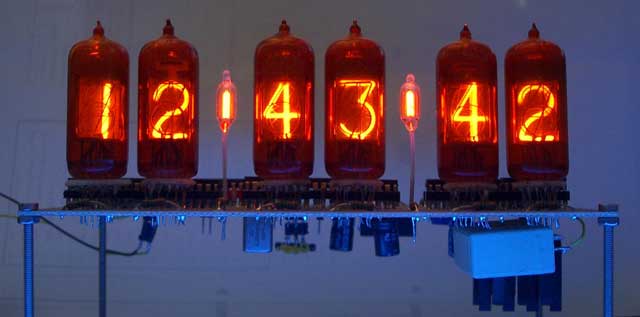Okay.
After much procrastination and a general lack of revenue, I was able to win an auction on an untested Tektronix oscilloscope model 7704A with 7A26 dual trace amplifier plug-in and the 7A22 Differential Amplifier plug-in. Even with it powering up and showing a trace, I lack the other necessary plug-ins and probes required to really do much with it. Additionally, I lack the associated test equipment that one would use to calibrate, repair, or otherwise restore the 'scope to spec.
So that project will stall for the time being. I can get by with my DMM and pad and pencil just fine.
Sort of.
While brainstorming ways to channel my suppressed burst of productivity, I decided to take a look through the box-worth of electronic parts I salvaged from the remaining possessions of my late uncle Dan. Not having much of an interest in amateur audio engineering while he was alive (and I was still rather young), I never really had any idea of what sorts of projects he spent his time on in the confines of his private quarters. All I could recall was that it smelled of the now-familiar whiff of solder and was a disorganized mess of parts my brothers and I were not to disturb on our visits. Fair enough.
Going through the three boxes of belongings I inherited after displaying a late interest in electronic tinkering, I quickly got the impression the dude was into speaker building. Specifically, of a low-end, Radio Shack discount-shelf salvage sort. I found bobbins of copper magnet wire, rebranded speaker drivers, "super-tweeters," enclosure stuffing, liquid latex speaker cone treatments, mini-subwoofers, dummy load resistors, terminal cups etc... that sort of stuff. Weeding through it all and discarding that which I couldn't imagine having any purposeful use for left me with one very small box of parts. Enough for a single set of speakers, including possible crossover parts.
To be morbidly honest, I rather enjoyed the ghoulish sensation of picking through it all.
So upon this eager-eyed re-examination of my inheritance I was happy to recover a matched pair of hand-wound inductors, four 25W 25ohm 1% dummy load resistors, a couple pair of matched film capacitors, a ten-pound bobbin of 24AWG magnet wire, and most importantly, a pair of thirty-year-old 4" full-range speaker drivers, model RS 40-1197, badged under the Realistic brand and manufactured by Fostex. Googling the speakers' model number generates a surprising amount of DIY plans one could undertake to incorporate these speakers into quality audio projects, and it was from these searches that I discovered somebody who handcrafts inexpensive aftermarket wooden phase plugs for these bad girls. Excellent. So I threw some money that way just to invest myself further into whatever end I could devise for my electronic bounty.
So after a bit of consideration, I determined that any serious test bench set up geared towards audio would be lacking without some sort of dedicated output device. With that thought, I determined the speakers in question were more than sufficient for my purposes and so there we have it.
But first, in order to make the speakers resemble a more "ideal" load for whatever powered device they're hooked up to, I would like to configure a zobel network using the Theile/Small parameters of the driver. Seeing as said parameters are not readily available, I will have to measure them myself. And doing so can be kind of tricky without the full bench set up but I'm optimistic it can be not only be done, but but done correctly and on the cheap.
Which brings me to my first endeavor: measuring the unknown inductance of the voice coils of a pair of RS 40-1197 full-range speaker drivers.
Next time.
